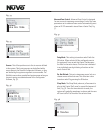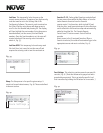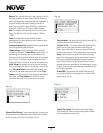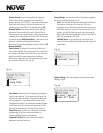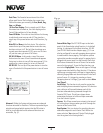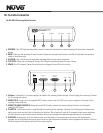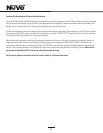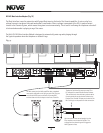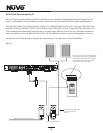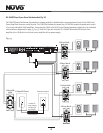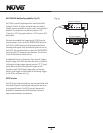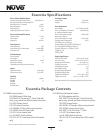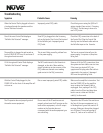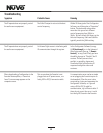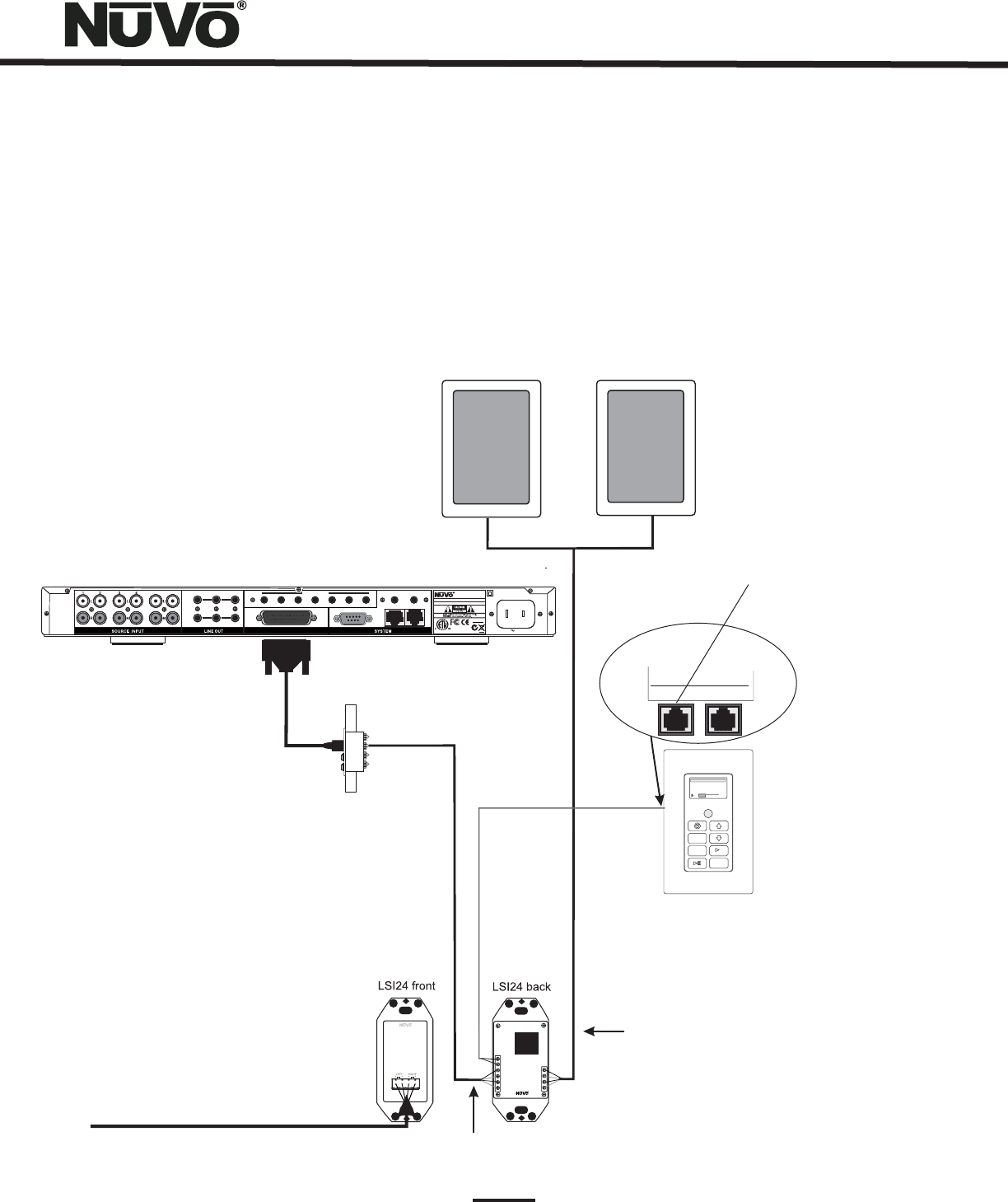
Essentia Control Pad
LOCAL SOURCE
SWITCH
NV-LSI24
CONNECT TO
AMPLIFIER
RLY+
RLY-
L-
L+
R-
R+
To Amplifier
To Keypad
To
Speakers
L-
L+
R-
R+
Model NV-LSI24
Mute Interface Module
The connection from the LSI24 is made through the
Accessory RJ45 port on the back of the Control Pad
terminated with standard 568A. The connection at
the LSI24 requires the use of the Brown lead for
positive and Brown Stripe for negative.
Accessory
NuVoNet
33
NV-LSI24 Local Source Interrupt (Fig. 52)
The Local Source Interrupt enables an amplified local audio source to override the Essentia System and play through the local
zone’s in-wall speakers. The most common scenario for this is a television that would benefit from higher-quality speakers.
The back of the Essentia Control Pad has two Cat-5 inputs. One is labeled NuVoNet and is the Cat-5 that runs to the Allport at the
head end. The other is labeled NV-E6GLSA. This is intended to react to the LSI24 accessory. It requires an RJ45 connection at the
Control Pad end and the Brown and Brown Stripe pair as a voltage trigger. When the Control Pad is on, NuVo audio is allowed to
pass to the speakers in the zone. When the Control Pad is off, the amplified local source is passed to the speakers in the zone.
Note that the Local Source Interrupt is a passive non-amplified device. The signal sent to it must be amplified.
M3A
1:19
3:48
2 OF 2-Follow th...2 OF 2-Follow th...
drift-Edge of Tomdrift-Edge of Tom
MENU
OK
Two or four conductor speaker wire
from the LSI24 to the zone
speakers.
Speaker input from Essentia
Amplified signal from the local zone source
56
FIXED VAR
ZONE
1
TRIG
ZONE
2
STATUS
NuVoNet
RS232
1
SUM
ALLPORTCONNECTION
IR OUTPUTS
23456
LINK
MUTE
MADE INCHINA
100~240V 50~60Hz 130W
1807
N1839
www.nuvotechnologies.com
MODEL NV-E6GM
SIXSOURCE SIX ZONE
AUDIODISTRIBUTION SYSTEM
3033118
NuVoTechnologies LLCHebron,Kentucky USA•
CONFORMSTO UL
STD.60065CERTIFIED
TOCAN/CSA STD.
C22.2No.60065:03
RoHS
CCC
C
C
C
C
C
C
C
C
C
C
C
C
C
C
C
C
C
C
C
C
C
C
C
C
C
C
C
C
C
C
C
C
C
C
C
C
C
C
C
C
C
C
C
C
C
C
C
C
C
C
C
C
C
C
C
C
C
C
C
C
C
C
C
C
C
C
C
C
C
C
C
C
C
C
C
C
C
C
C
C
C
C
C
C
C
C
C
C
C
C
Fig. 52



